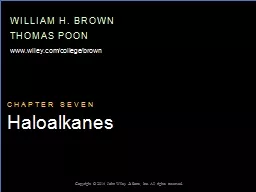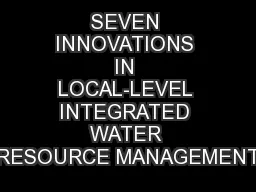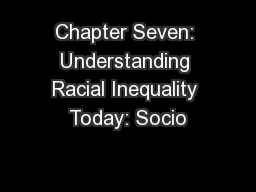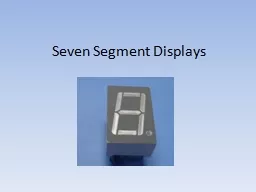PPT-CHAPTER SEVEN
Author : stefany-barnette | Published Date : 2016-04-23
Haloalkanes Copyright 2014 John Wiley amp Sons Inc All rights reserved Structure Haloalkane alkyl halide A compound containing a halogen atom covalently bonded
Presentation Embed Code
Download Presentation
Download Presentation The PPT/PDF document "CHAPTER SEVEN" is the property of its rightful owner. Permission is granted to download and print the materials on this website for personal, non-commercial use only, and to display it on your personal computer provided you do not modify the materials and that you retain all copyright notices contained in the materials. By downloading content from our website, you accept the terms of this agreement.
CHAPTER SEVEN: Transcript
Download Rules Of Document
"CHAPTER SEVEN"The content belongs to its owner. You may download and print it for personal use, without modification, and keep all copyright notices. By downloading, you agree to these terms.
Related Documents












![[READ]-Seven Deadliest Microsoft Attacks (Seven Deadliest Attacks)](https://thumbs.docslides.com/986890/read-seven-deadliest-microsoft-attacks-seven-deadliest-attacks.jpg)
![[DOWNLOAD] Excellence in Teaching with the Seven Laws: A Contemporary Abridgment of Gregory\'s](https://thumbs.docslides.com/1004007/download-excellence-in-teaching-with-the-seven-laws-a-contemporary-abridgment-of-gregory-s-seven-laws-of-teaching-649b853f343ec.jpg)
